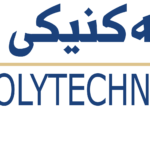- Chnar Mustafa Mohammed
- [email protected]
- 0750 172 1498
- Chnar_Thesis_Last V_December_11
-
Emerging fifth-generation mobile communication (5G) networks require high reliability, low latency, enhanced network capacity, and robust security. Managing Radio Access Network (RAN) infrastructure resources is challenging. Mobile service providers use Network Slicing (NS) to merge multiple services into an integrated 5G infrastructure. NS incorporates Wireless Network Virtualization (WNV) to smoothly separate services and efficiently allocate resources, ensuring optimal infrastructure utilization and network separation. However, WNV enables virtual management of NS, but the 5G network struggles to support end-user devices, causing delays in network slice selection and meeting modern telecommunications needs.
This thesis proposes a new NS architecture using virtualization to dynamically manage service selection and revenue between users and virtual operators in the 5G architecture. The virtual 5G RAN architecture includes Infrastructure Providers (InPs) and Mobile Virtual Network Operators (MVNO), serving hundreds of User Equipment (UEs). The architecture comprises sub-systems, including a wireless air-interface system, an economic system, and optimization algorithms. A new mathematical model is derived to introduce dynamic Inter-User Interference (IUI) and calculate a realized UE channel gain. In addition, integrating an economic model allows comprehensive cost and benefit analysis. The complexity of dynamic resource allocation necessitates a dual-pairing approach, pairing UEs with MVNOs and distributing InP resources to UEs through pre-selected MVNOs. For this instance, Matching Game (MG) and Particle Swarm Optimization (PSO) algorithms are introduced to optimize UE resource allocation while maximizing revenue for InPs and enhancing user throughput.
Simulation outcomes demonstrate the robustness of both algorithms in cost optimization and improved user throughput. The MG algorithm generates revenue by accurately matching user demands, while the PSO algorithm
V
prioritizes equitable resource distribution and offers lower prices. Both algorithms show a similar increase in convergence time as the number of UEs rises, stabilizing around 100 iterations for 300 UEs. PSO demonstrates faster convergence in 30 seconds compared to the MG's 45 seconds. In MG, the establishment of users reaches 98%, indicating a high user admission rate, and with PSO, the user engagement comes to %92. The study emphasizes the importance of considering WNV in 5G networks for resource and revenue optimization in the virtual RAN. - Erbil Technical Engineering College
- Information Systems Engineering Department
- 5G Network Slicing Communications Engineering


